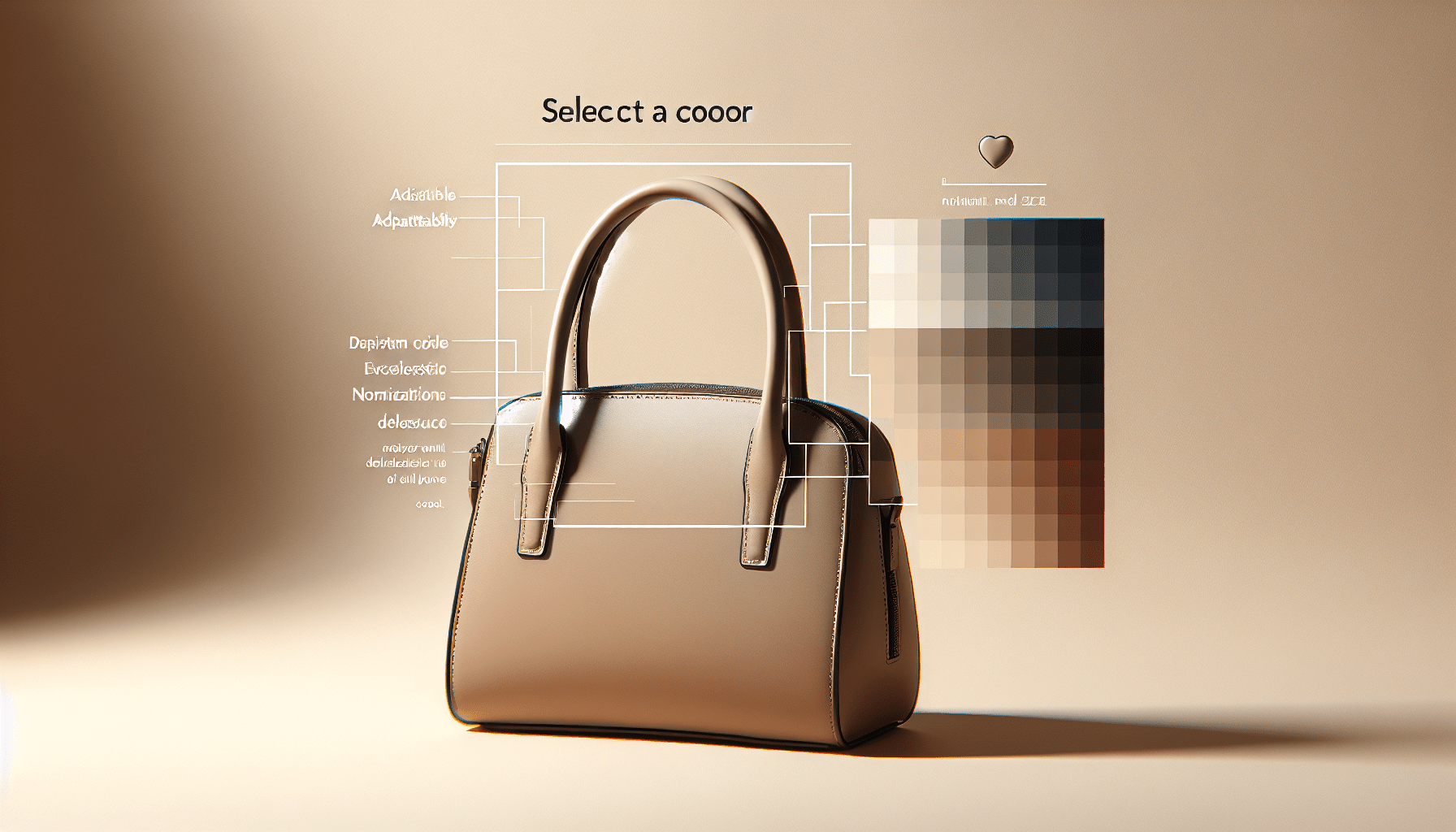How To Fix A Zipper On A Purse
If you’ve ever experienced the frustration of a broken zipper on your favorite purse, fear not! In this article, you’ll uncover simple and effective techniques on how to fix a zipper on a purse. Say goodbye to being late for appointments or fumbling with a half-closed purse, as we guide you step-by-step through the process of repairing a zipper. With just a few supplies and a little patience, you’ll be able to restore your beloved purse back to its former glory in no time. So, let’s get started and bring new life to your beloved accessory!
Materials Needed
To fix a zipper on a purse, you will need the following materials:
Needle-nose pliers
Needle-nose pliers are incredibly useful for fixing a zipper on a purse. They can help in manipulating the zipper slider or removing and replacing the zipper stop.
Lubricant
Lubricant, such as sewing machine oil or graphite powder, can be used to smooth out a sticky zipper. It helps the zipper slider glide along the teeth effortlessly.
Scissors
Scissors are essential for cutting thread, fabric, or any necessary materials during the zipper repair process.
Thread
Thread is needed for sewing and securing various parts of the zipper. Make sure to choose a thread that matches the color and strength of the existing zipper.
Needle
A needle is required for sewing purposes. Make sure to choose one that is appropriate for the fabric and thread you are using.
Measuring tape
A measuring tape is essential for accurate measurements when replacing or repairing parts of the zipper.
Seam ripper
A seam ripper is useful for removing seams or stitches around the zipper teeth or fabric. It allows for careful removal without damaging the surrounding material.
Zipper slider
A zipper slider may need to be replaced if it is malfunctioning or broken. Make sure to have a spare zipper slider that matches the size and type of the original one.
Zipper stop
A zipper stop helps prevent the slider from sliding off the track entirely. If the zipper stop is damaged or missing, it will need to be replaced.
Zip-top bag
A zip-top bag or container can be used to store spare zipper sliders, stops, or any other small parts during the zipper repair process. It helps in keeping everything organized and easily accessible.
Assessing the Zipper Issue
Before you can begin fixing a zipper on a purse, you need to assess the problem to determine the best course of action.
Identify the problem
Start by identifying the exact issue with the zipper. Is it stuck, separated, or broken? Understanding the problem will help guide your repair process.
Check for loose thread
Sometimes, a loose thread can cause a zipper to malfunction. Check for any loose threads that might be caught in the zipper teeth and remove them carefully.
Check for stuck fabric or debris
Fabric or debris may sometimes get stuck in the zipper, preventing it from moving smoothly. Inspect the zipper carefully for any obstructions and remove them if necessary.
Examine the zipper slider
The zipper slider is an essential component that may become worn out or broken. Inspect the slider to see if it is damaged, misaligned, or missing any parts.
Fixing a Stuck Zipper Slider
If your zipper slider is stuck, you can try a few steps to fix the problem.
Apply lubricant
Using a lubricant such as sewing machine oil or graphite powder, apply a small amount to the zipper teeth and the slider. Move the slider back and forth several times to distribute the lubricant and loosen any stuck parts.
Move the slider along the teeth
Gently move the zipper slider along the teeth, applying slight pressure. Be careful not to exert too much force as it may cause further damage. With the help of the lubricant, the slider should start to move smoothly.
Use needle-nose pliers for stubborn slider
If the slider is still stuck, you can use needle-nose pliers to grip it firmly. Gently pull the slider in the opposite direction of the teeth. Be cautious not to force it as it may break or damage the zipper.
Replace the slider if necessary
If the slider remains stuck or is broken beyond repair, you will need to replace it. Use the needle-nose pliers to remove the old slider and replace it with a new one that matches the size and type of the original.
Repairing a Broken Zipper
If your zipper is broken, repairing it requires a few steps.
Remove the old zipper stop
Using needle-nose pliers, carefully remove the old zipper stop by gripping and pulling it. Be cautious not to damage the surrounding fabric or teeth.
Detach the fabric from the old stop
Once the old stop is removed, detach the fabric from it. Carefully unpick any stitching or seams holding the fabric in place.
Measure and cut a replacement stop
Using a measuring tape, measure the appropriate length for a replacement zipper stop. Cut the replacement stop from a piece of fabric that matches the color and strength of the original.
Attach the replacement stop
Position the replacement stop on the fabric, aligning it with the original zipper track. Sew the new stop securely to the fabric, making sure it is firmly attached.
Reconnect the fabric to the stop
Reconnect the fabric to the replacement stop by sewing it back into place. Use small, secure stitches to ensure a strong connection.
Fixing a Separated Zipper
If your zipper has become separated, follow these steps to fix it.
Identify the cause of separation
Figure out why the zipper has separated. It could be due to a faulty slider, damaged teeth, or fabric strain. Identifying the cause will help guide your repair approach.
Realign the zipper teeth manually
Gently realign the separated teeth by holding both sides of the fabric and gradually bringing them back together. Move the slider up and down to ensure the teeth interlock properly.
Use a needle and thread to sew the fabric
Using a needle and thread, sew the fabric together at the bottom of the zipper track. Make small, secure stitches to reconnect the separated parts. This will reinforce the connection and prevent further separation.
Replace the zipper if necessary
If the zipper teeth are severely damaged or the separation continues to occur, it may be necessary to replace the entire zipper. Ensure you choose a suitable replacement zipper that matches the size and style of the original.
Sewing a New Zipper
If the existing zipper is beyond repair, sewing a new zipper onto the purse is an effective solution.
Choose a suitable replacement zipper
Select a replacement zipper that matches the size, color, and style of the original zipper. Ensure it is long enough to cover the existing zipper opening on the purse.
Prepare the purse for the new zipper
Use a seam ripper to carefully remove the existing zipper and any surrounding fabric. Create a clean, open space for the new zipper to be sewn in.
Pin the new zipper in place
Position the replacement zipper on the inside of the purse, aligning it with the opening. Use pins to secure it in place. Double-check that the zipper is facing the correct direction before proceeding.
Sew the new zipper onto the purse
Using a needle and thread, sew the new zipper onto the purse. Start from one end and sew along each side, creating a secure stitch that attaches the zipper to the fabric. Be mindful of tension and stitch placement for a professional finish.
Repairing Zipper Teeth
Damaged zipper teeth can be repaired using the following steps.
Identify damaged teeth
Inspect the zipper teeth and identify any that are broken, misaligned, or missing. It’s important to address these damaged teeth to ensure the zipper functions smoothly.
Use a seam ripper to remove fabric near the teeth
Using a seam ripper, carefully remove any fabric or stitching around the damaged teeth. This will allow you to access the area for repair.
Replace the damaged teeth
If the teeth are severely damaged or missing, you will need to replace them. Purchase replacement zipper teeth that match the original size, style, and color. Attach the new teeth by carefully sewing them onto the zipper fabric.
Reattach the fabric
Once the replacement teeth are securely attached, reattach the fabric that was removed using a needle and thread. Sew it back into place, ensuring a strong connection between the fabric and zipper.
Reinforcing Weak Zipper Stitching
Weak stitching can lead to zipper issues, but it can be reinforced using these steps.
Identify weak stitching
Examine the zipper stitching and identify any areas of weakness or looseness. Strengthening these areas will help prolong the life of the zipper.
Remove the existing stitching
Using a seam ripper or small scissors, carefully remove the weak stitching from the zipper. Take your time to avoid damaging the fabric or surrounding stitches.
Secure the stitches with double thread
Thread a needle with double thread for added strength. Sew through the existing stitch holes, reinforcing the weak areas by creating additional stitches.
Sew over the weak areas
Sew over the weak areas, going back and forth several times to create a secure and reinforced stitch line. This will help prevent future issues and ensure the durability of the zipper.
Preventing Zipper Issues
To prevent zipper issues in the future, follow these helpful tips.
Avoid overloading the purse
Avoid overfilling or placing excessive weight on the purse, as it can put strain on the zipper and cause it to malfunction or break.
Zip and unzip with care
Ensure you zip and unzip the purse carefully without applying excessive force or pulling at extreme angles. Gentle handling prevents unnecessary stress on the zipper.
Regularly clean the zipper
Keep the zipper clean and free from debris by regularly wiping it with a soft cloth or gentle brush. This prevents fabric fibers or dirt from obstructing the zipper functionality.
Store the purse properly
When not in use, store the purse in a cool, dry place away from direct sunlight. Avoid tightly folding or bending the purse, as this can strain the zipper and cause it to wear out prematurely.
Final Tips
Here are some additional tips to keep in mind when fixing a zipper on a purse.
Keep spare zipper sliders and stops
It’s a good idea to keep spare zipper sliders and stops on hand, especially if you often work on zipper repairs. They can come in handy when a slider or stop needs to be replaced.
Practice on an old fabric first
If you’re new to repairing zippers, practice on an old fabric or scrap material first. This will allow you to familiarize yourself with the techniques and gain confidence before working on your purse.
Seek professional help if necessary
If the zipper issue seems too complex or beyond your skill level, don’t hesitate to seek the help of a professional tailor or seamstress. They have the experience and expertise to fix the problem effectively.
Fixing a zipper on a purse may seem daunting, but with the right materials and a little patience, it is a manageable task. By following the steps outlined in this article, you can successfully repair various zipper issues and ensure your purse remains functional and stylish. Remember to take preventative measures, keep spare parts on hand, and seek professional assistance when needed. With this knowledge, you can confidently tackle any zipper issue that comes your way.




